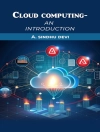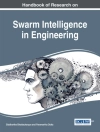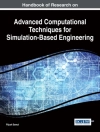In the modern world, sensors and sensor networks are critical features in developing applications for control and automation in engineering and technology. Cognitive Science is a multidisciplinary area of research that covers artificial intelligence, neuroscience, mathematics, philosophy, psychology, linguistics, automated diagnosis etc. Cognitive sensors and associated AI and algorithms are most important components of cognitive science research and studies. This book will provide a review of the emerging theme of cognitive sensors, how it functions and its applications in a range of disciplines.
Volume 2 features Cognitive Sensors in smart healthcare, including appropriate Signal Processing, Filtering, Machine Learning and AI for medical Cognitive Science analysis and applications; Case Studies, Brain Disorder and Stress analysis.
Key Features:
- Reviews Intelligent Sensing, Io Ts and Embedded Machine Learning for sensor data.
- Incudes smart healthcare and other smart automated systems exploiting cognitive sensing techniques.
- Psychological studies on sensor data for educational and other research work.
Зміст
Preface
Acknowledgement
Editor biography
List of contributors
Introductory commentary
1 Introduction to the principles of spatially fractionated radiotherapy
2 General principles of SFRT biology
3 The immunologic effects of nonuniform dose irradiation
4 The biology of FLASH—a critical appraisal for clinical translation
5 SFRT experience in multi-disease studies of voluminous and metastatic tumors
6 GRID spatially fractionated radiation therapy: definitive radiation therapy in bulky primary tumors
7 SFRT—lattice therapy: definitive radiation therapy in bulky primary tumors
8 Proton beam spatially fractionated radiation therapy: clinical data
9 GRID-collimator-based and static-field SFRT
10 The technical aspects of 3D lattice radiation therapy (LRT)
11 Rotational arc SFRT
12 Electron beam SFRT
13 Proton beam spatially fractionated radiotherapy
14 Radiobiological modeling and equivalent uniform dose for spatially fractionated radiation therapy
15 Spatially fractionated radiation therapy field calibration and commissioning
16 Small-field dosimetry for spatially fractionated radiation therapy
17 SFRT dose prescription
18 SFRT dosimetric parameters and their associations with treatment response
19 Monte Carlo simulation of photon beam spatially fractionated radiotherapy
20 Monte Carlo simulation of proton SFRT
21 Microbeam SFRT with photons
22 Spatially fractionated radiation therapy: from photons to charged particles
23 Ultrahigh-dose-rate electron FLASH therapy
24 The use of synchrotrons in SFRT and FLASH therapy
Conclusions
Glossary of spatially fractionated and FLASH radiation therapy
Про автора
Dr G R Sinha is working as Adjunct Professor at International Institute of Information Technology, Bangalore, currently deputed as Professor at Myanmar Institute of Information Technology, Mandalay. He obtained his B.E. and M.Tech. with Gold Medal from National Institute of Technology, Raipur and his Ph.D. in Electronics & Telecommunication Engineering from Chhattisgarh Swami Vivekanand Technical University, Bhilai. He has published over 200 research papers in various international and national journals and conferences, is an active reviewer and editorial member of numerous international journals and has authored or edited six books.












